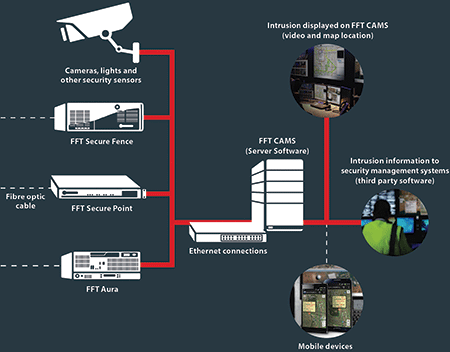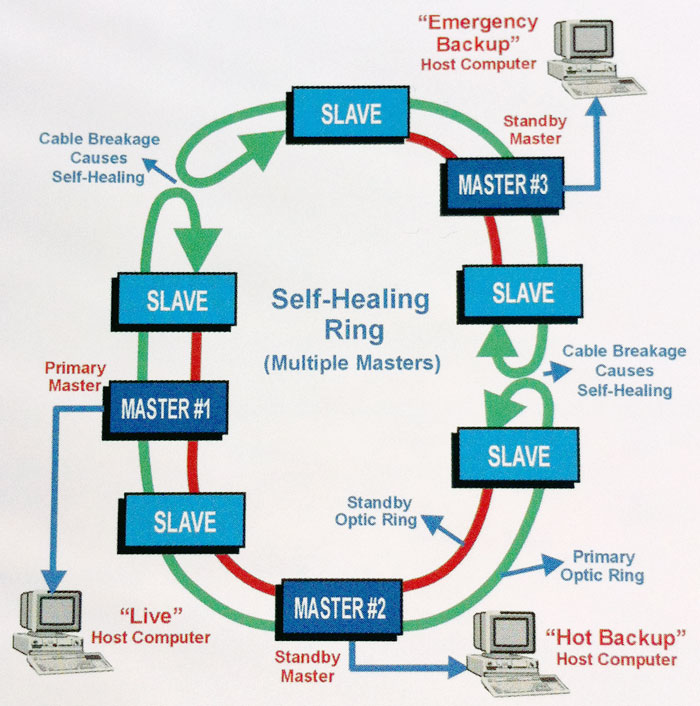Why a Fiber Optic Security System Is Important for Sensitive Facilities and Environments
Why Fiber Optic Safety And Security Equipments Are the Future of Security
The shift to fiber optic security systems notes a considerable advancement in the world of protection, driven by their remarkable information transmission abilities and strength to outside disturbances. These systems not only facilitate faster and a lot more reputable communication however additionally provide a cost-effective option with lowered maintenance demands. As the landscape of protection advances alongside arising modern technologies such as AI and IoT, the capacity for fiber optics to boost and redefine security infrastructures becomes progressively noticeable. However, the implications of these developments elevate vital concerns concerning the future of safety measures and their effectiveness in an ever-changing atmosphere.
Benefits of Fiber Optic Solutions
Among the main advantages of fiber optic systems is their exceptional bandwidth capacity, which facilitates the transmission of large quantities of information over cross countries without significant loss. This characteristic is specifically valuable for protection applications that need the constant monitoring and transfer of high-definition video clip feeds, sensing unit data, and other essential details. Fiber optics can accommodate the expanding demands of modern security systems, guaranteeing that data remains undamaged and reputable.
Additionally, fiber optic cables are much less vulnerable to electromagnetic disturbance, which can be a significant issue in settings with numerous electronic gadgets. This resistance improves the integrity of the information being sent, thus minimizing the threat of information breaches or system failures. Additionally, fiber optic systems are inherently a lot more secure than typical copper cords, as taking advantage of a fiber optic line without detection is exceptionally hard.
The longevity of fiber optic wires also adds to their appeal. They are resistant to ecological aspects such as wetness and temperature level fluctuations, reducing maintenance costs and boosting system longevity. Overall, these advantages placement fiber optic systems as a durable and effective choice for modern security facilities, making sure reputable and secure data transmission.
Improved Information Transmission Rate

The ability to send huge quantities of data rapidly facilitates the seamless assimilation of high-def video feeds and progressed analytics. Security systems can now refine and examine details in real-time, enhancing feedback times and situational recognition. In addition, fiber optic connections sustain longer transmission distances without degradation of signal quality, making them optimal for expansive protection networks.
The enhanced speed of fiber optic systems not only boosts the efficiency of safety operations yet also lowers latency. This is particularly essential in crucial scenarios where timely decision-making can stop safety and security violations or reduce potential dangers. As companies remain to focus on safety and effectiveness, the demand for fast and reliable data transmission will unquestionably strengthen fiber optic systems as a cornerstone of modern-day safety and security infrastructure.
Resistance to Interference
Fiber optic security systems continually show exceptional resistance to electro-magnetic interference, a crucial advantage in atmospheres susceptible to digital noise. Unlike traditional copper cords, which can be negatively affected by electromagnetic areas, superhigh frequency interference, and other types of electrical disruption, fiber optic wires use light to send information. This inherent property makes sure that the signals remain clear and unaltered, no matter bordering electronic activity.
The usage of glass or plastic fibers in fiber optic modern technology produces a barrier versus interference, enabling reliable data transmission also in difficult situations such as industrial facilities, urban locations with high electronic website traffic, or areas near radio towers. This characteristic considerably lowers the likelihood of signal degradation or loss, making fiber optic systems specifically appropriate for security applications where honesty and precision of information are vital.
Additionally, this resistance to interference enhances the general efficiency and dependability of protection systems, making certain that tracking and sharp systems function flawlessly. In a world where security is increasingly threatened by address advanced innovations, the resilience of fiber optic systems stands apart as a pivotal attribute, reinforcing learn the facts here now their condition as a crucial element of modern-day protection infrastructure.
Cost-Effectiveness With Time
Significant price financial savings can be achieved gradually with the application of fiber optic protection systems. While the initial financial investment may appear higher compared to typical copper-based systems, the long-term monetary advantages end up being evident via decreased functional and upkeep prices (fiber security). Fiber optic cable televisions are inherently much more long lasting and less vulnerable to environmental factors, which equates to decrease replacement and repair service expenditures over their life expectancy
Moreover, fiber optic systems require less power to operate, which further lowers power prices. Enhanced information transmission capacities permit fewer repeaters and amplifiers, decreasing equipment investment and enhancing installment processes. The scalability of these systems additionally adds to cost-effectiveness, as companies can increase their safety and security facilities without sustaining considerable added costs.
An additional factor to consider is the raised efficiency in monitoring and reaction abilities that optical fiber offer. Improved real-time information transmission can result in quicker incident response times, possibly mitigating losses and obligations connected with security violations. Altogether, the long-term advantages of fiber optic safety systems not just justify the preliminary expenditure yet additionally place them as a monetarily prudent option for companies looking for durable security solutions.

Future Technologies in Safety And Security
Advancing innovations are readied to revolutionize safety and security systems, incorporating expert system (AI) and equipment learning to improve danger discovery and response capabilities. These advancements will certainly permit security systems to analyze large quantities of information in real-time, recognizing patterns and abnormalities that show potential threats. This proactive method will allow quicker decision-making and extra reliable case responses.
Additionally, the incorporation of the Web of Things (IoT) is leading the means for interconnected protection tools, offering comprehensive surveillance and monitoring. Smart sensors can communicate info regarding environmental changes, while automated alerts can notify security employees immediately of suspicious tasks.
In addition, the advancement of biometric modern see this page technologies will certainly better strengthen protection devices. Face acknowledgment, fingerprint scanning, and retina identification are coming to be extra innovative, supplying layers of authentication that are difficult to bypass.
Verdict
To conclude, fiber optic security systems represent a significant improvement in security innovation, using unmatched data transmission speed, resistance to electro-magnetic disturbance, and lasting cost-effectiveness. As the need for sophisticated security options remains to expand, the combination of fiber optics with arising technologies such as AI, IoT, and biometrics will certainly even more enhance safety infrastructures (fiber security). The mix of these developments will certainly make sure a more safe and responsive setting, solidifying optical fiber as a cornerstone of future safety systems